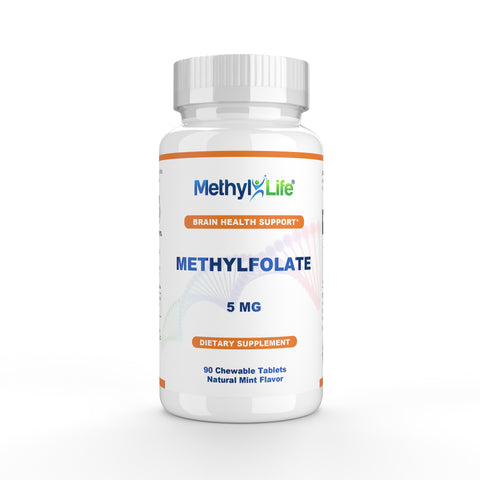What is unmetabolized folic acid syndrome?
Unmetabolized folic acid (UMFA) syndrome occurs when the synthetic form of folate (folic acid) is not broken down (metabolized) properly in the body, so it remains in the bloodstream.1 UMFA can be a result of supplementing with high doses of folic acid. It does not occur when supplementing with natural and active forms of folate. This is because folic acid must be converted into its active form, methylfolate (5-MTHF), through a two-step process involving an enzyme called dihydrofolate reductase (DHFR). However, DHFR is often inefficient and can quickly reach its maximum capacity, which means it doesn’t process folic acid properly. When this happens, any excess folic acid remains unmetabolized and accumulates in the bloodstream as unmetabolized folic acid (UMFA).2
In people with functioning MTHFR and DHFR enzymes, low doses of folic acid are usually metabolized and methylated in the gut or liver. However, doses over 200 μg (a single serve of breakfast cereals can contain up to 400 μg) can lead to UMFA in blood and cord blood.3
Researchers have noted that the extremely low conversion rate of folic acid means that any benefits will be limited by saturation of DHFR, especially in people who have lower than average DHFR activity.4
Circulating levels of UMFA in the general population have been increasing since 1998, when folic acid was first added to fortified foods. Folic acid is also used in over 50 other countries. While numerous studies support the benefits of folic acid, recent research has highlighted concerns regarding potential unintended adverse consequences due to high circulating UMFA.
Studies show that even low doses of folic acid (0.2–0.4 mg) can lead to detectable UMFA levels, and trace amounts have been found even in those not taking supplements.5 It is estimated that over a third of the US population is exposed to high levels of dietary folic acid from both supplements and fortified foods.6
People with MTHFR mutations are at higher risk of UMFA as they are unable to process even low doses of folic acid.









